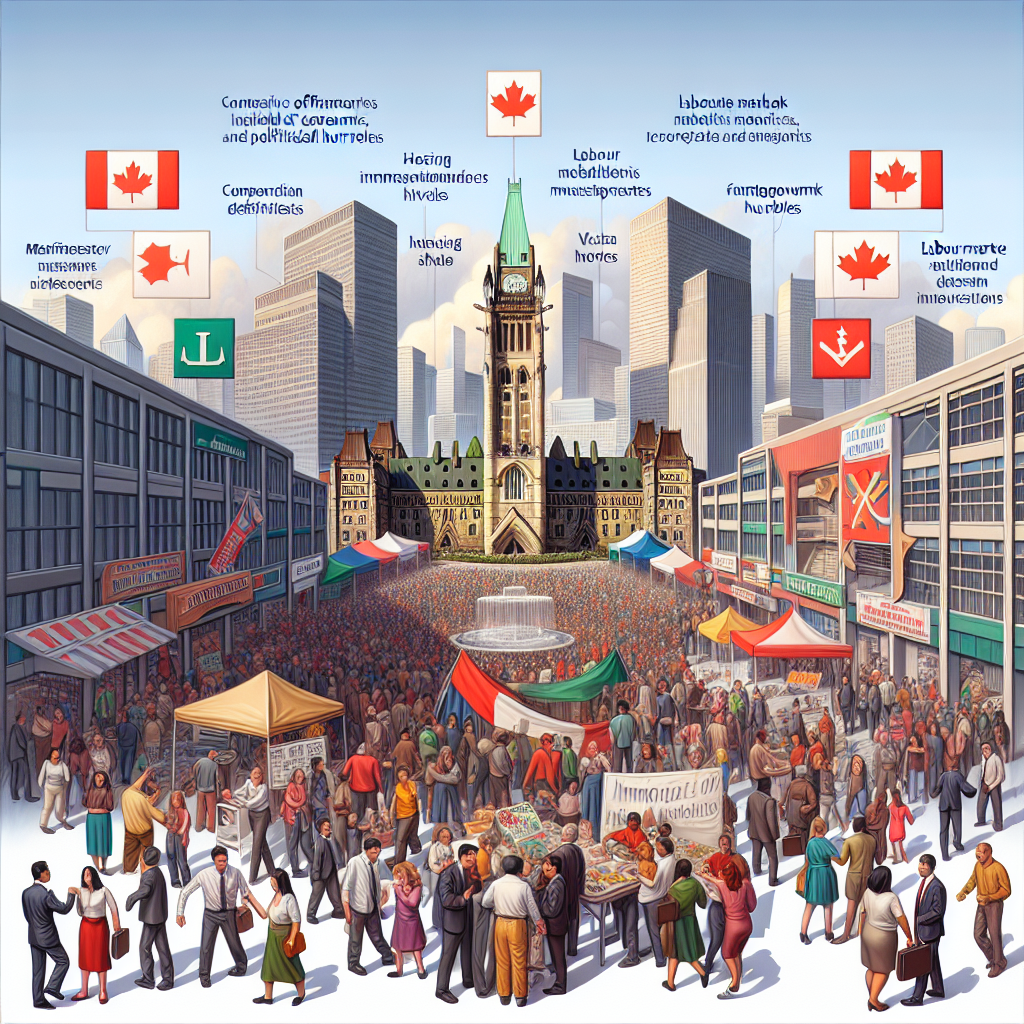Canada Faces Immigration Dilemma: Labour Needs vs. Political Pressures

Canadian Immigration: Navigating Economic Necessity Amid Political Calls for Restriction
As Canada grapples with a burgeoning population nearing 41.5 million, the immigration debate intensifies. With a backdrop of political calls for stricter immigration controls, the country faces pressing economic challenges that underscore the necessity of a robust immigration framework. The question looms: should Canada cut immigration or refine its approach to meet the needs of its economy?
The Political Landscape: Hard Caps vs. Economic Demands
The call for "hard caps" on immigration by Conservative leader Pierre Poilievre has ignited national discourse. He argues that Canada’s rapid population growth—nearly one million annually—has outpaced housing and job creation. His stance reflects widespread concerns about:
- Housing Shortages: Current construction rates fall dramatically short of the estimated need of 430,000 to 480,000 new homes annually.
- Job Market Stagnation: An unemployment rate of 6.9%, with youth unemployment hitting 14.2%, signals a stalled job market.
- Strained Infrastructure: Urban areas are struggling to keep pace with demands on transit, schools, and healthcare.
However, these concerns must be weighed against the economic reality—cutting immigration could exacerbate existing workforce shortages rather than alleviate pressure on housing and services.
Economic Implications of Reducing Immigration
Data indicates that many sectors, especially those critical to Canada’s economy, are facing severe labor shortages. For instance:
- Small Businesses: Over half report an inability to fill vacant positions, stifling growth and innovation.
- Higher Education: Post-secondary institutions are experiencing budget crises due to reduced numbers of international students, who previously provided significant financial support.
- Brain Drain: A troubling exodus of over 100,000 Canadians in 2024 further diminishes the domestic talent pool.
Industries like tech, healthcare, and construction rely heavily on a steady influx of skilled immigrants. A reduction in immigration could lead to decreased productivity and weakened essential services, creating a larger economic burden.
A Call for Strategic Immigration Reform
Rather than implementing blanket caps, a more nuanced approach is necessary—one that strategically aligns immigration with labor market demands. Experts suggest several solutions:
- Targeted Occupation Prioritization: Focus on bringing in workers for sectors with verified shortages.
- Regional Adjustments: Tailor immigration levels to specific regions based on local housing capacity and labor needs.
- Expedite Pathways for Skilled Workers: Streamline processes for skilled immigrants to fill urgent roles more effectively.
- Enhance Rural and Provincial Programs: Strengthen initiatives that encourage immigration to less populated areas, distributing growth more evenly across the country.
This strategy not only addresses immediate workforce gaps but also fosters a sustainable immigration system that can adapt to the evolving needs of the economy.
Looking Ahead: Balancing Concerns and Realities
The future of Canadian immigration hinges on finding equilibrium between public sentiment and the economic imperatives of the nation. While political narratives may lean toward restriction, the underlying requirement is for smarter, data-driven policies that attract the right talent at the right time.
If Canada can harness immigration effectively, it will not be viewed as a burden but rather as a vital solution to its economic challenges. The path forward must embrace a vision that values immigration as an essential component of a thriving, dynamic society, ensuring that the country not only survives but flourishes in the face of demographic and economic shifts.
By prioritizing a strategic and responsive immigration policy, Canada can transform potential challenges into opportunities for growth and innovation.



